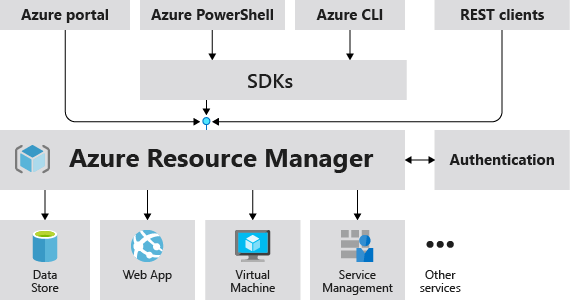Managing resources in a cloud environment can be a complex and time-consuming task. Azure Resource Manager, a powerful and intuitive management tool provided by Microsoft Azure, simplifies the process of deploying, organizing, and managing resources in the Azure cloud. It enables you to define and manage your infrastructure as code, streamline resource provisioning, and improve operational efficiency.

Azure Resource Manager templates support parameterization and modularization, allowing you to customize and reuse templates for different scenarios. You can define input parameters to make your templates dynamic and flexible, and you can break down complex deployments into smaller, reusable templates for improved maintainability and scalability.
One of the key benefits of Azure Resource Manager is its declarative template-based approach to resource deployment. Using Azure Resource Manager templates, you can define your infrastructure and services in a JSON file, capturing the desired state of your resources. This enables you to consistently and reliably deploy resources across different environments, ensuring that your infrastructure configurations are version-controlled and reproducible.
In addition to resource deployment, Azure Resource Manager provides comprehensive resource management capabilities. You can monitor the health and performance of your resources, view their dependencies and relationships, and track changes and updates over time. With Azure Resource Manager, you have a centralized view of your resources and can easily manage them through the Azure portal, PowerShell, Azure CLI, or REST APIs.
Azure Resource Manager (ARM) is the deployment and management service for Azure. It allows you to use infrastructure as code to reliably deploy and manage your Azure solutions. With ARM, you can define, organize, categorize, and control your app resources in a declarative template. This makes it easier to edit and distribute configurations and ensures that you provision the same environment every time.
Infrastructure as Code (IaC) is the managing and provisioning of infrastructure through code instead of through manual processes. With IaC, configuration files are created that contain your infrastructure specifications, which makes it easier to edit and distribute configurations. It also ensures that you provision the same environment every time.
ARM templates can be used to deploy resources together, repeat deployment tasks, and apply tags and roles to manage access and billing. You can use tools such as Terraform, Bicep, and extensions to manage your infrastructure as code. ARM templates can be deployed using Azure PowerShell, the Azure CLI, and GitHub Actions.
Using IaC with ARM templates can provide many benefits, such as policy enforcement, resource deployment automation, modular development, and lower chances of environmental resources being out of sync. However, there are also some challenges, such as the learning curve, hard to use with existing resources, hard in credentials/secret handling, and hard in diagnosing and fixing errors.
By leveraging Azure Resource Manager, you can simplify and automate resource management in Azure. It enables you to define and manage your infrastructure as code, organize resources effectively, and streamline the deployment and maintenance of your cloud-based solutions. With Azure Resource Manager, you can focus more on building and innovating, while reducing the complexity and effort associated with managing your Azure resources.

Chris Wan
Microsoft Certified Trainer (MCT)
Application Architect, SOS Group Limited



